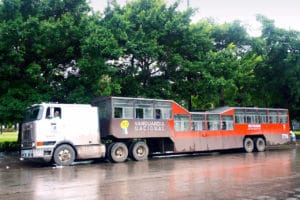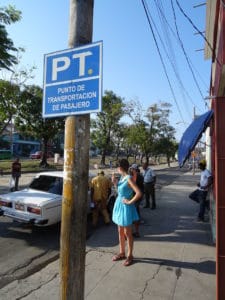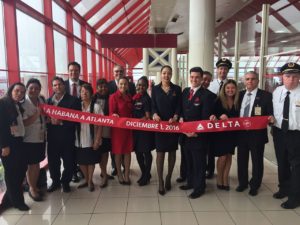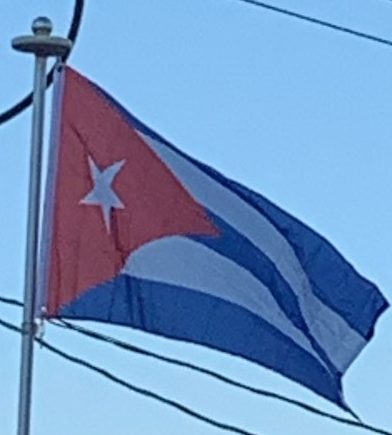
After the upgrading of Seville’s public bus fleet to CNG-powered vehicles, many of the decommissioned ones were donated to the city of Havana. These bright orange buses still display the name of Transportes Urbanos de Sevilla, S.A.M., their former owner, and Seville’s coat of arms as a sign of gratitude.
Since 2009, Cuba has imported sedans from Chinese automaker Geely to serve as police cars, taxis and rental vehicles. Previously, the Soviet Union supplied Volgas, Moskvichs, and Ladas, as well as heavy trucks like the ZIL and the KrAZ. It is estimated that there are some 173,000 cars in Cuba.
Most new vehicles came to Cuba from the United States until the 1960 United States embargo against Cuba ended importation of both cars and their parts. As many as 60,000 American vehicles are in use, nearly all in private hands. Of Cuba’s vintage American cars, many have been modified with newer engines, disc brakes and other parts, often scavenged from Soviet cars, and most bear the marks of decades of use. Pre-1960 vehicles remain the property of their original owners and descendants, and can be sold to other Cubans providing the proper traspaso certificate is in place. In 2011, the Cuban government legalized the purchase and sale of used post-1959 autos. In December 2013, Cubans were allowed to buy new cars from state-run dealerships – previously this had not been permitted.

However, the old American cars on the road today have “relatively high inefficiencies” due in large part to the lack of modern technology. This has resulted in increased fuel consumption as well as adding to the economic plight of its owners. With these inefficiencies, noticeable drop in travel has occurred from an “average of nearly 3000 km/year in the mid-1980s to less than 800 km/year in 2000–2001”. As the Cuban people try to save as much money as possible, when traveling is done, the cars are usually loaded past the maximum allowable weight and travel on the decaying roads, resulting in even more abuse to the already under maintained vehicles.
As a result of the “Special Period” in 1991 (a period of food and energy shortages caused by the loss of the Soviet Union as a trading partner), hitchhiking and carpooling became important parts of Cuba’s transportation system and society in general. In 1999, an article in Time magazine claimed “In Cuba[…] hitchhiking is custom. Hitchhiking is essential. Hitchhiking is what makes Cuba move.”
Besides the state owned airline Cubana (Cubana de Aviación), the two other major Cuban airlines are Aero Caribbean and Aerogaviota, both of whom operate modern European and Russian aircraft. One other airline is Aerotaxi.

Airports with at least one international destination include the following:
José Martí International Airport
Ignacio Agramonte International Airport
Jardines del Rey Airport
Vilo Acuña Airport
Jaime González Airport
Frank País Airport
Sierra Maestra Airport
Abel Santamaría Airport
Antonio Maceo Airport
Juan Gualberto Gómez Airport
